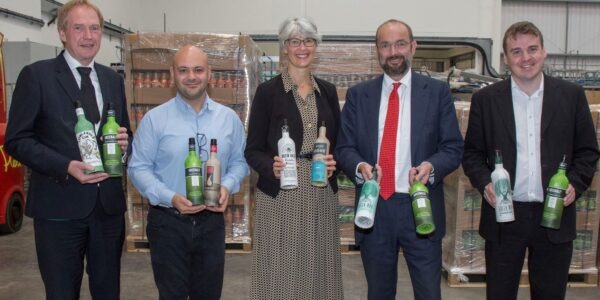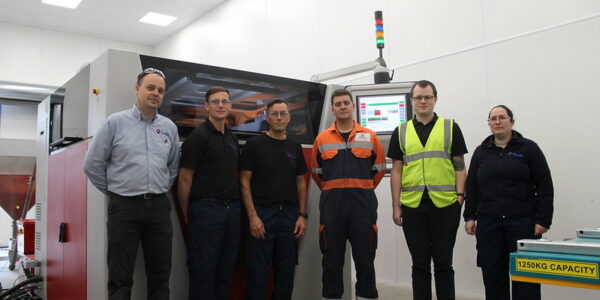Manufacturing activity declines sharply but it’s not all doom and gloom
24/07/2020 - CBI

UK manufacturers reported that output volumes in the three months to July fell at a similar pace to the quarter to June, according to the latest CBI quarterly Industrial Trends Survey. However, firms expect manufacturing activity to begin to recover in the coming months, marking the first time that manufacturers have anticipated output to grow since the COVID-19 crisis hit.
The survey of 356 manufacturing firms saw total new orders in the three months to July fall at their fastest pace since October 1980. Within this, domestic orders and export orders declined at record paces.
The COVID-19 crisis continues to weigh heavily on investment plans, as the shares of manufacturers citing uncertainty about demand and cash flow-related concerns as factors to limit investment reached survey-record highs.
But there are some early signs that the worst might be behind us. Business sentiment stabilised in the three months to July, following a survey-record plunge in April while export sentiment fell at a slower pace following a record decline last quarter. Investment spending for the year ahead is still planned to be cut back sharply, but to a lesser degree than in April. And total new orders and domestic orders are expected to pick up in the next three months, while export orders are anticipated to fall at a slower pace.
Rain Newton-Smith, CBI Chief Economist, said:“Manufacturers continue to face extreme hardship due to the COVID-19 crisis. Output volumes continued to decline at a record pace, while total orders have fallen at their fastest rate since October 1980.
“There are tentative signs of gradual recovery on the horizon, with firms expecting output and orders to begin to pick up in the next three months. But demand still remains deeply depressed.
“The Government has provided vital support to protect manufacturing businesses and jobs throughout the crisis. But firms remain very concerned about their financial situation and their capacity to invest. It is crucial for the Government to consider how it can continue to support viable firms through this crisis.”
Tom Crotty, Group Director at INEOS and Chair of the CBI Manufacturing Council, said: “The latest survey showcases the significant challenges that manufacturers have faced over the last three months due to the COVID-19 crisis. However, these results may prove to be a low point in the crisis, with manufacturers expecting output to grow for the first time since the pandemic hit.”
“Government policy measures have proved vital in supporting manufacturers during the crisis, but it’s clear that many firms are still in distress. As the UK economy begins to recover, it will remain vital that the government continues to work with firms to both shore up near-term cash flow and build a stronger, more sustainable manufacturing sector.”
Key findings:
Output
- Output volumes in the quarter to July fell at a similar pace to June (-59% from -57% in June – the sharpest decline on record (1975)). This marks the third month in a row in which a new record pace of decline was set.
- Output dropped in 14 out of 17 sub-sectors. The headline fall in output volumes was led by the motor vehicles & transport, food, drink & tobacco, and mechanical engineering sub-sectors.
- Manufacturers expect output in the next quarter to begin to recover (+15%). This is the first time that firms have expected output to grow since February 2020.
- The share of firms citing orders or sales as a factor to limit output in the next three months rose to its highest since October 2009.
Orders
- Total new orders in the quarter to July fell at their fastest pace since October 1980 (-60% from -25% in April). Domestic orders and export orders fell at record paces (-64% and -62%, respectively)
- Manufacturers expect total new orders (+9%) and domestic orders (+11%) to begin to pick up in the next three months, while export orders (-18%) are expected to fall at a slower pace.
- The proportion of manufacturers citing political/economic conditions abroad as a factor to limit export orders next quarter (65%) remained broadly in line with last quarter’s survey-record high.
Headcount
- Headcount in the three months to July fell at their fastest pace since April 2009 (-47% from -14% in April). Firms expect employment to decline at a slower pace next quarter (-38%). It is not clear from the data whether firms are including furloughed employees in their estimates of headcount.
Costs and prices
- Average costs in the quarter to July (+32%) grew at their fastest pace since July 2018, up from April (+22%). Manufacturers anticipate average cost growth to slow (+15%) in the next three months.
- Average domestic prices in the quarter to July (-24%) fell at their fastest pace since January 2002, while average export prices (-28%) declined at their quickest since July 2000. Firms expect domestic prices to pick up slightly (+4%) next quarter, while export prices are anticipated to fall at a slower pace (-10%).
Business sentiment
- Business sentiment was broadly flat in the three months to July (-1%), following a survey-record fall in the three months to April (-87%). Export sentiment fell at a slower pace (-17%), following the record-fast decline in the quarter to April (-84%).
Investment
- Firms expect investment in buildings, plant & machinery, and training & retraining to decline in the next year, but to a lesser extent than last quarter. Capital expenditure in product & process innovation is expected to remain broadly flat.
- The share of firms citing uncertainty about demand as a factor to limit investment in the next year (76%) reached a new survey record high, surpassing last quarter’s record.
- The share of manufacturers mentioning an inability to raise external finance and the cost of finance as factors to limit capital expenditure picked up to record highs (35% and 33%, respectively), while the share citing internal financial shortages (43%) remained in line with last quarter’s record high.
All articles on this news site are submitted by registered contributors of SuffolkWire. Find out how to subscribe and submit your stories here »


